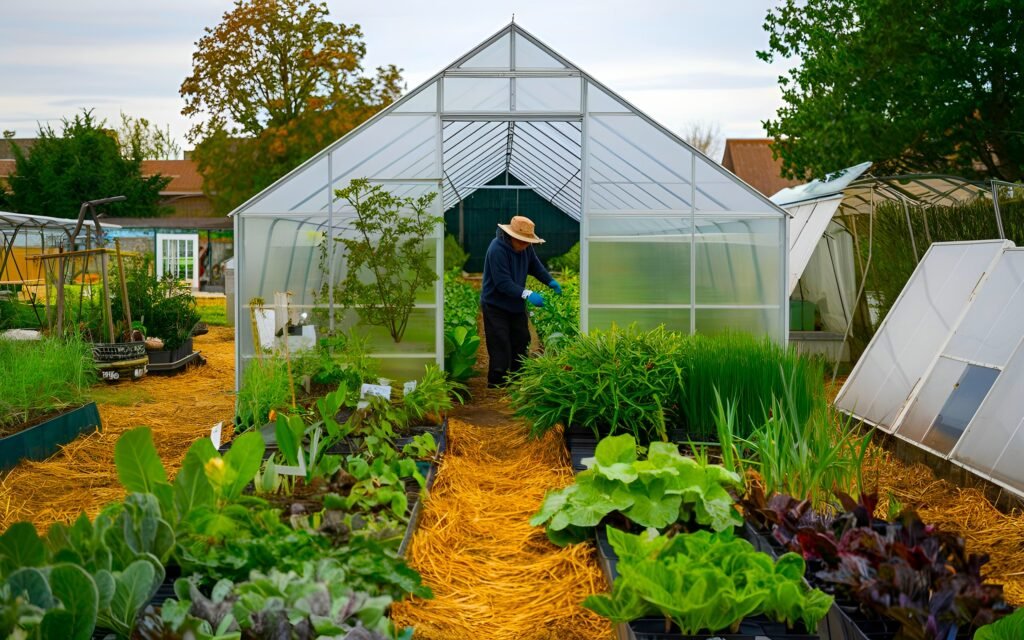Introduction
Winter gardening can seem daunting, but it is one of the most rewarding ways to connect with nature all year long. Cold molds and stoves can turn your gardening dreams into reality, even though Geda is strong. Want to know how? Let’s come together.
Understanding Winter Gardening
Definition and Benefits
Wrapping or winterizing Jardina Gem plants during the cooler months. With proper configuration, you can enjoy fresh fruits and vegetables even in cool, dry places. Benefits include a year-round food supply, more sustainable practices, and unique gardening challenges.
Overcoming common winter gardening challenges
Prague faces challenges such as limited sunlight, low temperatures and, I say, control with the right planning, tools, and techniques. will be prepared to conquer these obstacles.
What Are Cold Frames and Greenhouses?
Cold Frames
These Bacan moldings are small box-shaped structures with transparent walls. They serve as small fireplaces. It catches sunlight and protects plants from it. Elements include glass, plexiglass, wood, and even old windows
Greenhouses
The stove was larger and older, designed to provide a controlled environment for the plants. Suitable for serious gardeners who want to grow a more diverse range of non-wintering cultures.
The Science Behind Winter Gardening
This is because plants can grow in non-winter conditions by taking advantage of natural sunlight and storing or giving off heat. The firebox and cool building serve as a heat shield. Create a warm and humid environment suitable for growth.

Choosing Between Cold Frames and Greenhouses
Factors to Consider
Accessories and space are the two biggest factors. The cold storage structure is economical and compact. While stoves require more investment and are more flexible.
Ideal Usage Scenarios
Use cold molds to initiate molting or protect resistant cultures. These stoves are best suited for growing tennis or large-scale gardening.
Building Your Cold Frame
Materials You’ll Need
Gather wood, a clear cover (like a plexiglass), and hinges for easy opening and closing.
Step-by-Step Instructions
- Choose a sunny location.
- Build a rectangular frame using wood.
- Attach the transparent cover with hinges.
- On hot days, prop the lid open to ensure adequate ventilation
Setting Up a Greenhouse
Key Considerations
Place your stove in a location with maximum sunlight. Focus on good insulation and ventilation to maintain optimum conditions.
Building vs. Buying
Even though a DIY stove is economical, it takes time and effort. Because ready-made options save time. Therefore it may be more expensive.
Maximizing Yield in Winter Gardening
Plant Selection
Green leaves such as spinach, cuv, and alface thrive in winter. Root vegetables like sinura and radishes are also great choices.
Soil Preparation
The built-in Misture Compost just guarantees it will be rich in nutrients. Raised cliffs can be used or thought about to enhance drainage.

Maintenance Tips for Cold Frames and Greenhouses
Keep the structure clean to allow maximum sunlight penetration. Regularly look for cracks or scratches, and restore them right away.
Common Mistakes to Avoid
Overwatering can cause the roots to shrink. While insufficient watering can hurt plant growth, Fique is mindful of Prague despite our colder months.
Advanced Winter Gardening Tips
Cultures such as onions and scallions are combined. To maximize space and prevent Prague Use a thermal mass (such as a water column) to store or provide heat within the stove.
The Environmental Benefits of Winter Gardening
Winter gardening reduces reliance on store-bought produce, cutting down your carbon footprint. It’s an ecologically sound way to eat fresh food throughout the year.
Conclusion
Creating a winter garden with coolant and laraira is almost impossible – unfortunately, with a little effort and creativity. You will be able to taste the fresh produce even in the colder months.
Learn more about Growing Herbs Indoors During the Winter Months >>>
FAQs
- What vegetables grow best in winter gardening?
Green leaves like spinach and kuv Along with roots like senura and radish are ideas. - How can I avoid damage to my stove top?
Make sure there is adequate insulation. Check the temperature And use frost blankets if necessary. - Are cool moldings suitable for all climates?
Yes, but they’re most effective in milder winters.



